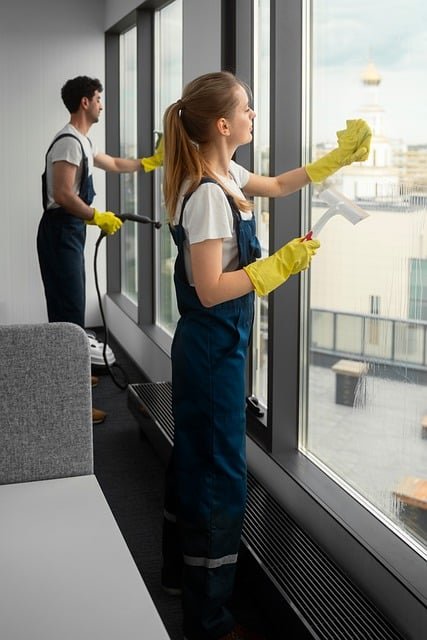Comparing ceramic metallic and dyed films for light and heat control
Window films alter how glass handles sunlight, heat and visibility. Ceramic, metallic and dyed films each use different materials and structures to reduce solar gain, manage glare, and affect privacy and safety. Understanding their trade-offs helps property and vehicle owners choose glazing solutions that match energy, comfort and maintenance priorities.

How do ceramic and metallic films control solar heat?
Ceramic films use nonconductive ceramic particles to block and reflect portions of the solar spectrum, including some near-infrared wavelengths that carry heat. Metallic films rely on thin metal layers or sputtered coatings to reflect solar radiation and reduce heat transmission through glass. Dyed films, by contrast, absorb visible light and convert some solar energy to heat within the film itself, offering less heat rejection than ceramic or metallic options.
Choosing between them depends on whether priority is high heat rejection with minimal color change (ceramic), strong reflectivity (metallic), or a lower-cost visual tint (dyed). Ceramic tends to perform well without interfering with radio or GPS signals, while metallic coatings can sometimes affect electronic reception.
How do films reduce glare and block UV?
Glare reduction comes from lowering visible light transmission and changing the angle and intensity of incoming light. All three film types can reduce glare, but the mechanism differs: dyed films reduce glare primarily by absorbing visible wavelengths, metallic films reflect a portion of incoming light, and ceramic films scatter and filter light with minimal color shift.
Ultraviolet (UV) protection is commonly achieved across modern films: many can block >99% of UV-A and UV-B, which helps limit fading of interiors and reduces UV exposure. Always check manufacturer UV-blocking specifications rather than assuming performance solely from film type.
Do films provide privacy, safety and security?
Privacy depends on light transmission and reflectivity. Metallic films often offer higher daytime reflectivity, increasing daytime privacy, while dyed and ceramic films provide more subtle tinting that reduces visibility without creating a mirror effect. For nighttime privacy, additional window treatments or darker films may be needed because interior lighting can reveal silhouettes.
Safety and security films are distinct product categories: thicker, laminated safety films are designed to hold glass fragments together during breakage. While some ceramic and metallic films can improve impact resistance modestly, certified safety/security films are the right choice when holding shards or delaying forced entry is required.
How do films affect insulation and energy use?
Window films influence a glazing system’s thermal performance by reducing solar heat gain and, in some cases, improving comfort without changing the window’s insulation value (U-factor). Films that block near-infrared radiation lower cooling loads in warm climates; in cooler climates, films that also reduce heat loss through conduction can provide modest insulation benefits at night by reducing radiant heat transfer from interior glass surfaces.
For energy considerations, match film selection to building orientation and HVAC characteristics. South- and west-facing glazing often benefit most from higher solar heat rejection, while north-facing glass may prioritize visible light control and glare reduction to maintain daylighting.
Which automotive, residential or commercial uses suit each film?
Automotive applications balance UV protection, glare control, and legal limits on visible light transmission. Ceramic films are popular in vehicles for heat rejection and preserving signal transmission. Metallic films appear in both vehicles and commercial glazing where reflectivity or a specific aesthetic is desired, though metallic coatings can complicate radio reception in some cases.
Residential and commercial glazing choices depend on goals: residential owners often prioritize UV protection, privacy and aesthetics, while commercial properties may emphasize energy savings, occupant comfort, and facade appearance. Low-e glazing and window films can be used together, but compatibility and expected performance should be verified with product data.
Maintenance, lifespan and product comparisons
Maintenance for most films is straightforward: use non-abrasive cleaners and soft cloths, avoid ammonia-based products on certain adhesives, and follow manufacturer guidance for curing time after installation. Lifespan varies by film quality, installation conditions, and exposure to sun and weather, with many quality films carrying multi-year warranties when professionally installed.
Real-world pricing and product comparisons help set expectations. Typical installation costs vary based on vehicle type or window area and film performance tier. Below is a comparison of representative manufacturer products and estimated cost ranges.
| Product/Service Name | Provider | Key Features | Cost Estimation |
|---|---|---|---|
| Ceramic IR / Ceramic Series | 3M | Nonconductive ceramic particles, strong heat rejection, minimal interference with signals | Automotive: $300–$800; Residential per window: $6–$12/ft² installed |
| Ceramic / Stratos Series | LLumar (Eastman) | Ceramic-based, high infrared rejection, color-stable | Automotive: $250–$700; Residential per window: $5–$11/ft² installed |
| Ceramic High-Performance Films | Huper Optik | Sputtered ceramic technology, high clarity and heat control | Automotive: $350–$850; Commercial: $6–$15/ft² installed |
| Metal/Sputtered Films | Solar Gard / Saint-Gobain | Reflective metallic layers, strong solar reflectivity | Automotive: $200–$650; Residential per window: $4–$10/ft² installed |
| Dyed Films / Economy Line | Various regional brands | Absorptive dye layer, lower-cost tinting, reduced glare | Automotive: $100–$350; Residential per window: $3–$8/ft² installed |
Prices, rates, or cost estimates mentioned in this article are based on the latest available information but may change over time. Independent research is advised before making financial decisions.
Conclusion Ceramic, metallic and dyed films each offer distinct trade-offs for light and heat control: ceramic films emphasize high heat rejection with low signal interference, metallic films provide strong reflectivity and privacy, and dyed films offer cost-effective glare reduction and tinting. Match film type to specific needs—vehicle vs. home vs. commercial glazing—taking into account privacy, UV protection, energy goals and maintenance expectations. Professional product specifications and local services can clarify compatibility and expected outcomes.






